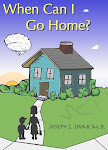
Writing an Alzheimer's memoir, can be a healing as well as a gut-wrenching experience. The journey of Alzheimer's Disease is so lonely and isolating, there is a need to scream to the world, "HEY DON"T YOU GET IT?" Hence the hundreds and hundreds of Alzheimer's Memoirs. Each and everyone a unique and powerful story, with the common thread of the diabolical disease linking all memoirs.
Why can't the caregivers and the victims be heard? Why do we still have limited treatment for this killer? Why do we still have no advancement in the real definitive diagnosis? We diagnose with 100% accuracy the same way we diagnosed the disease when Dr. Alzheimer discovered it 100 years ago. No progress. The Alzheimer's Breakthrough Act of 2009 may die again in the U. S. Senate and House of Representatives- Bigger fish to fry.
-Hence the Alzheimer's Memoir.
Most Alzheimer's memoirs offer a deeply personal and intimate look into one's life. It is a risky proposition, but the need to write about it, the need to blog about it, pushes past the fear and the embarrassment and the humiliation.
I believe the writer wants to say, "HEY DON"T YOU GET IT?"
How personal do you get? Do you talk about the ugliest details of the disease? Who really wants to read about THAT?
How do you balance the ugly detail and still offer hope? Hope must be offered for the writer and for the reader. Right?
Without hope, what does the reader take away from the book? Enlightenment? Certainly that is something most people, the 250 million or so that have not been yet touched by Alzheimer's, clearly need in regard to the disease.
Most people not yet affected or touched in some way would rather be enlightened about about something like say baseball, or Sarah Palin, or Tiger Woods.
The Alzheimer's memoir emerges. For the writer, for the reader? So many stories need to be told. They need to be shared, they need to be archived for generations to come. I am pretty confident that every writer of an Alzheimer's memoir, got just at least a molecule of hope, if not bushels and bushels of hope in putting their story on the page.
If it gave hope to one reader touched by AD or enlightened one reader not touched by AD then the labor and heartache put forth in writing the book, the emotional roller coaster, the anguish, has all been worth it in the end.
God Bless all those Writers of the Alzheimer's Memoir. Your story is told and your loved one never forgotten. They live on not just in your memory, but in your printed word. For those writers who have AD and have written about it, I can not even begin to express the respect and dignity I feel for your courage and wisdom.




















